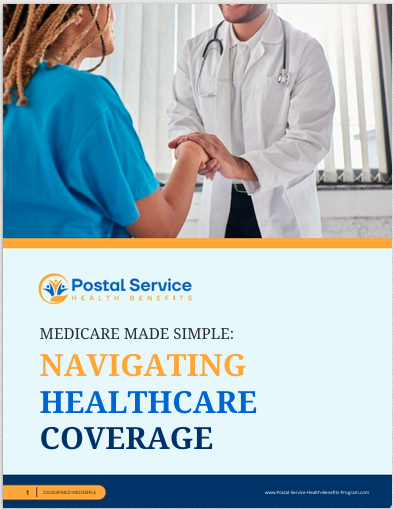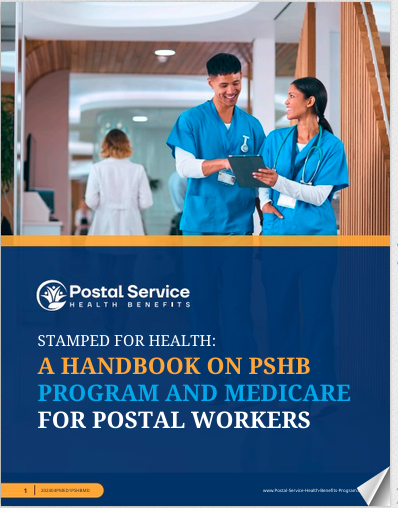Key Takeaways
- USPS retirees need to understand how coinsurance and copayments impact their healthcare costs to make informed decisions about their coverage options.
- Comparing FEHB, PSHB, and Medicare plans based on coinsurance and copayments can help manage out-of-pocket expenses and ensure adequate healthcare.
How Coinsurance and Copayments Affect USPS Employees’ Healthcare Costs
Navigating healthcare costs can be complex, especially for USPS employees transitioning from the Federal Employees Health Benefits (FEHB) program to Medicare and Postal Service Health Benefits (PSHB) upon retirement. Understanding the impact of coinsurance and copayments on healthcare expenses is essential for effective financial planning. This guide explores how these cost-sharing mechanisms work and their implications for USPS employees.
Understanding Coinsurance and Copayments
Coinsurance
Coinsurance is a form of cost-sharing between the insured and the insurance company, expressed as a percentage of the total cost of a service. For example, if a USPS retiree has a coinsurance rate of 20% for a particular medical service, they will be responsible for paying 20% of the allowed amount for that service, while the insurance company pays the remaining 80%.
Copayments
Copayments, or copays, are fixed amounts paid by the insured for specific healthcare services, such as doctor visits, prescription medications, or emergency room visits. Unlike coinsurance, copayments are usually a set fee, regardless of the total cost of the service. For instance, a USPS employee might have a $25 copay for a primary care visit.
The Impact of Coinsurance and Copayments on Healthcare Costs
Immediate Out-of-Pocket Costs
One of the most direct impacts of coinsurance and copayments on USPS employees’ healthcare costs is the immediate out-of-pocket expense at the point of care. While copayments offer predictability with set amounts for specific services, coinsurance can lead to higher and more variable costs, especially for expensive treatments or procedures.
For example, if a USPS retiree requires a medical procedure costing $1,000 and has a 20% coinsurance rate, they would need to pay $200 out-of-pocket. In contrast, a copayment for a similar service might be a fixed $50, providing more financial certainty.
Cumulative Healthcare Expenses
Over time, the cumulative effect of coinsurance and copayments can significantly influence a USPS employee’s total healthcare spending. Frequent doctor visits, chronic condition management, and unexpected medical needs can quickly add up, making it crucial to understand and anticipate these costs.
USPS employees transitioning to Medicare should be aware that Medicare typically involves both coinsurance and copayments. Medicare Part B, for instance, often requires a 20% coinsurance for outpatient services after meeting the annual deductible. Additionally, specific services under Medicare Advantage plans may also involve varying copayments.
Choosing the Right Plan
Selecting the right health insurance plan involves considering how coinsurance and copayments fit into overall financial planning. USPS employees need to compare FEHB plans with Medicare options, including Medicare Advantage and Medigap (Medicare Supplement) plans.
Medicare Advantage plans often include copayments and coinsurance but might cap out-of-pocket expenses annually, providing some financial predictability. Medigap plans, designed to cover gaps in Original Medicare, can reduce coinsurance costs but come with their own premiums and potentially higher upfront costs.
Strategies to Manage Coinsurance and Copayments
Budgeting for Healthcare Costs
Effective budgeting is essential to manage coinsurance and copayment expenses. USPS employees should:
- Estimate Annual Healthcare Needs: Consider the frequency of doctor visits, prescription medications, and potential procedures to anticipate annual out-of-pocket costs.
- Track Expenses: Maintain records of all healthcare expenditures to monitor spending and adjust budgets accordingly.
- Set Aside Funds: Consider establishing a Health Savings Account (HSA) or other savings plans specifically for medical expenses to cover anticipated and unexpected costs.
Maximizing Plan Benefits
USPS employees can also take advantage of the benefits offered by their health plans to manage costs effectively:
- Preventive Care: Utilize covered preventive services, such as screenings and vaccinations, which may be offered without copayments or coinsurance under certain plans.
- Network Providers: Choose healthcare providers within the plan’s network to reduce out-of-pocket costs, as out-of-network care often incurs higher coinsurance and copayments.
- Generic Medications: Opt for generic drugs over brand-name medications when possible to lower prescription costs.
Comparing FEHB and PSHB with Medicare Options
FEHB vs. Medicare
FEHB plans typically involve a combination of copayments and coinsurance, with coverage varying significantly between different plans. As USPS employees transition to retirement, they need to decide whether to continue FEHB coverage or switch to Medicare.
While FEHB plans may offer broader coverage and include family members, Medicare can provide cost savings for individuals through lower premiums and additional coverage options like Medicare Advantage and Medigap. Comparing the specific benefits, copayments, and coinsurance rates of each option is crucial.
PSHB Transition
The Postal Service Health Benefits (PSHB) program, set to replace FEHB for postal employees, will also feature coinsurance and copayments. Understanding the details of these new plans and how they compare with existing FEHB and Medicare options will be essential for managing healthcare costs effectively.
Conclusion
For USPS employees, understanding how coinsurance and copayments affect healthcare costs is crucial for making informed decisions about their health insurance. Whether navigating the transition from FEHB to PSHB or considering Medicare options, evaluating the implications of these cost-sharing mechanisms can help ensure financial stability and access to necessary care.
By budgeting effectively, maximizing plan benefits, and carefully comparing available insurance options, USPS employees can manage their healthcare expenses and make choices that best meet their needs. Staying informed about changes in healthcare policies and plan details is vital for optimizing coverage and minimizing out-of-pocket costs.
By understanding the nuances of coinsurance and copayments, USPS employees can better navigate their healthcare options and make decisions that align with their financial and health needs.
Contact Information:
Email: [email protected]
Phone: 4075554567







